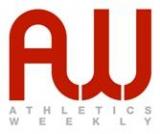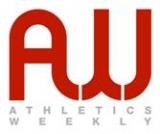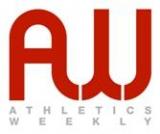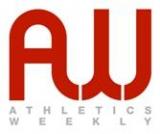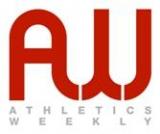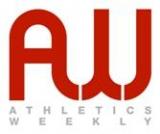Folders |
How they train Kyle LangfordPublished by
Kyle Langford took time out of his training in Kenya to tell AW about his meteoric riseThis summer Kyle Langford clocked a 1:47.41 800m for a fine second at the British Milers Club Grand Prix at Watford. There were no British runners ahead of him that day, victory going to Thomas Roth of Norway. Later in the season, the BMC circuit paid dividends again, this time at Solihull, with a near-identical performance and another runners-up spot, 1:47.45 behind Vincent Kibet of Kenya. Perhaps, though, one of his best performances came in the rarely run 600m at the British Athletics Grand Prix in Birmingham where he set a UK under-20 age-best of 1:16.30 which augurs well for super-quick times over two laps next summer. At Watford, Langford was targeting the IAAF World Junior Championships qualifying time. He says: I did have big doubts, although my coach, George Harrison, did not. But there are always some demons in your mind! I was happy with that race, but nowhere near content. At Solihull, I was racing with the mentality of it being my World Junior final I was badly ill for the final in Eugene and ended up finishing a disconsolate eighth.” That race in Oregon tainted what was otherwise an annus mirabilis, but Langford was nonetheless philosophical. He laments: I cruised through the semi-final stage in 1:48.76 but then I got stomach problems prior to the final and was really sick. We never really found out the cause. It could have been food poisoning or even heat stroke.” Still, a brave decision to compete by the 18-year-old, maybe foolish in some eyes, saw him finish the race when many would have walked off the track. He adds: It wasn t a nice feeling, but I felt proud of getting to the finish.” All of this seems a long way from the situation that existed when he entered the sport, although in terms of longevity, the time span has been a relatively short four years. His first race came at the comparatively late age of 15 when he tried out a 200m in school. At the end of the race he was approached by his local club.
Langford says: I got asked to come and train at the club and at that time I thought I wasn t very good, even though I was clocking around 55-56 seconds for 400m. After the first time at the club I didn t go back I felt really out of place and to be honest I didn t enjoy it. Around a year later, my dad convinced me to try and train with the coach that my younger sister was running with, George Harrison. After that training session I began training just once a week on a Saturday morning and that lasted for about two months.” The 18-year-old eventually joined Shaftesbury Barnet six months after that first session in 2011. He started by doing 400m races, improving to a healthy 52.34. At the end of the summer he ran his first 800m at a Watford Open meeting. He explains: I didn t really want to do it as I thought I wasn t good enough to run a decent two laps. I maintained I was a one-lap runner. The outcome of that race was that I ran 2:02.90 and won it and I then ran another two open meetings and clocked sub-2:02 on both occasions. From that point on 800m was my event.” When Langford started training, his maximum weekly volume was five or six miles, including one session. After two months of running he doubled his weekly workload to two sessions and his mileage thus entered double figures. By the mid-winter point in early December of that year his frequency went up another notch to three sessions a week and the heady heights of 15 miles in one week!nThe Shaftesbury athlete adds: I gradually committed myself more as I improved.” When asked about his memories of an early success he remembers the aforementioned Watford Open race while the following year (2012) he fondly recalls another Watford event. He explains: I had run 1:57.62 at the England under-17 indoors, so I knew I was on for a good time outdoors. I remember my coach saying that there were a couple of good guys in the race who were running around 1:55. The only point I remember of the race was that I was next to Patrick Taylor from Vale of Aylesbury and I just had a little bit more than him and I won in 1:54.79, which was a massive PB.” Later that season he improved significantly to 1:51.31, courtesy again of a BMC Watford Grand Prix. So what was his first important breakthrough race? Langford ponders and says: In my opinion, I would say the English Schools in 2012 up in Gateshead. For me it broke down some mental barriers and also it made my coach realise that we could go on to bigger and better things, considering the training that I was doing at the time.” Was there a particular moment that made him think that he could move on to international level? He adds: Not really. Everything happened so fast. In my first two years of running I went on to finish third at the 2013 World Youths in Donetsk with a PB of 1:48.32 and things just progressed from there.”
Langford is keen to point out: I always try and get as much cross country done as possible for my endurance and strength. Last winter season I was out injured with a rolled ankle, which usually isn t too bad, but I had a swelling defect, which meant it was staying swollen with there being no apparent reason for it. Everything was put back for about two months I had an MRI and the results took over a week to come through. I then had to get a cortisone injection into my ankle and that took over a week to recover and when you add everything up, it was around January, and that s where my speed endurance training takes place and in my opinion, that s the most important training for getting around two laps in good shape!” Langford s favourite type of session is an endurance type and he explains: Especially when I m running well as it s the most satisfying of them all. My training group has a good crop of endurance runners like Glen Watts, Phil Crout and Robbie Lightowler and there are many more and I find running in a good group sets down benchmarkers on how I m going it motivates me to wake up and do the Saturday sessions at 10am even when it s raining and muddy. Mind you, my least favourite is definitely a muddy endurance session and more so when you re not running well!” Looking at his goals, Langford is extremely ambitious. Long-term I want to be in medal contention for the 2016 Olympics in Rio! Short-term making the team for the World Championships in Beijing next year is a major aim.” Langford was speaking to AW at a training camp in Kenya from which he has now returned. Being here is an amazing experience it s a lot slower with more impact running than I m used to. The altitude is around 8000ft and I have had to ease into my training. However, I m using this as an opportunity to up my training mileage that little bit more!” Langford is certainly a talented athlete, but also a grateful one and adds: I would just like to thank my coach for sticking by me and having faith he s taken good care of me and I appreciate it.” He also gives thanks to Tom Bedford, who has helped him, and most importantly he is appreciative of his parents for giving him the best opportunity for his athletics career. He would also like to thank his local sponsor MPS Security for their assistance. SUMMER TRAINING WEEK EXAMPLEMonday: Rest day. The above sessions are specific to the individual athlete and may not be suitable for other athletes The post How they train – Kyle Langford appeared first on Athletics Weekly. Read the full article at: www.athleticsweekly.com
More news |

